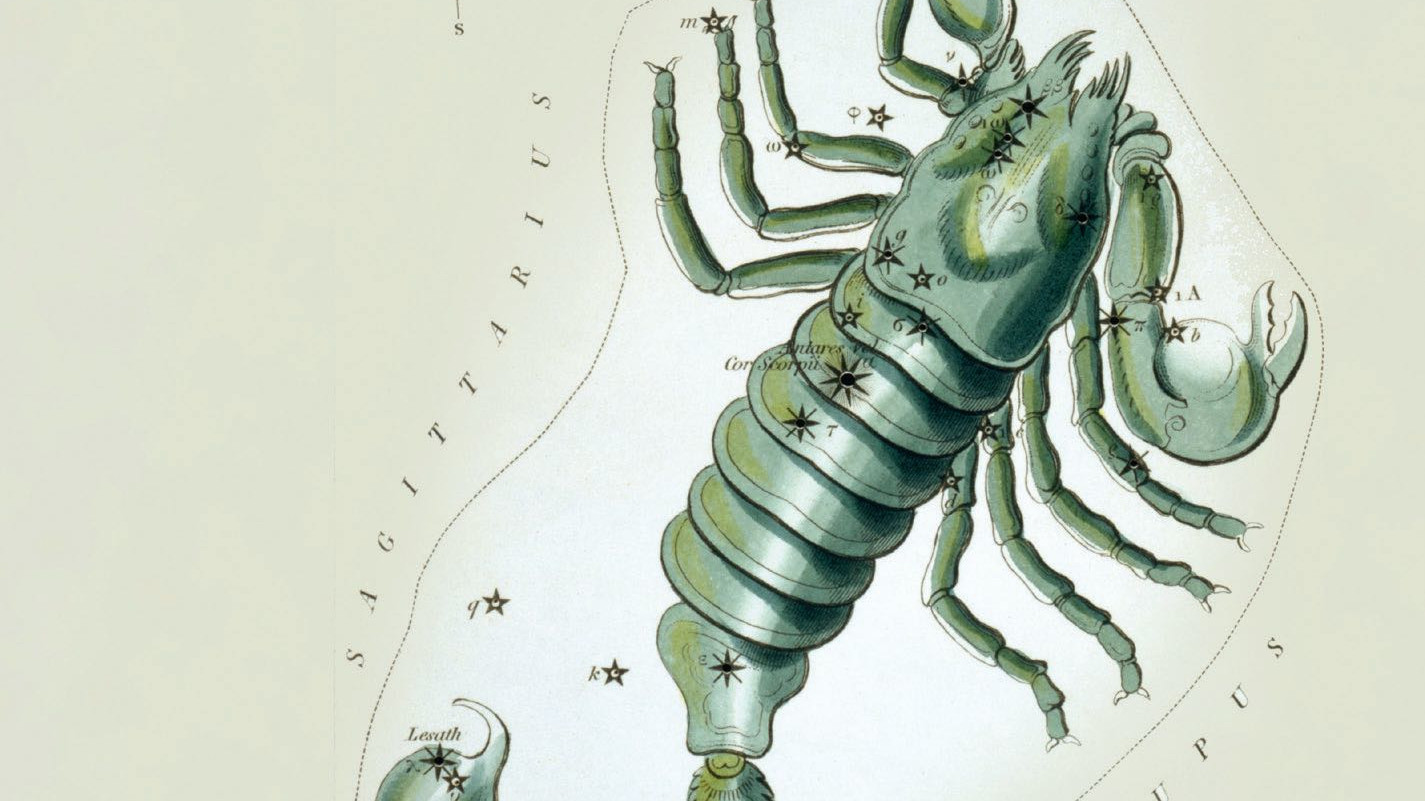Scorpius
This constellation lies far to the south, and its proximity to the Milky Way ensures beautiful star clusters, including the southernmost Messier object M7.
 Unfortunately, in Central Europe, Scorpius’ dangerous tail remains hidden below the horizon.
Unfortunately, in Central Europe, Scorpius’ dangerous tail remains hidden below the horizon.Only the northern part of Scorpius can be seen from Central Europe. Its orange-coloured brightest star Antares (α Scorpii) marks the heart of the creature, and counts among the 15 brightest stars in the night sky. It’s absolutely huge: as a red supergiant, its diameter is more than 700 times greater than the diameter of our Sun. If you want to see the constellation in its entirety, you have to travel at least as far south as the Mediterranean.
At home in many cultures
The name of this constellation comes from the astronomers of Mesopotamia. Around 5000 years ago, the Sumerians called the constellation GIR.TAB, which literally means "sharp weapon" or "burning sting". They connected the constellation with Išhara, a goddess of the underworld. At the same time, it was also imagined as half scorpion, half man. In the Sumerian Gilgamesh epic, two Scorpion Men guard the gate to the underworld, through which the Sun rises and sets.
The most famous mythological story dates from Ancient Greece and is about the fearless hunter Orion, who claimed to be able to kill every animal. This angered Artemis, the goddess of the hunt, who sent a scorpion to kill the boastful hunter. Orion died from a sting from the poisonous tail. The two opponents were sent to the sky, placed as far apart as possible. New Zealand's indigenous people, the Maori, depict the meandering constellation as a magical fish hook in their myths, with which the demigod Maui one day pulled a piece of land out of the ocean. This piece of land eventually broke into two parts and New Zealand was created.
Star clusters; globular and open
Due to its proximity to the Milky Way, there are many star clusters to be found in Scorpius. With a brightness of magnitude 5.8, the globular cluster M4 should theoretically be visible to the naked eye, but the very bright star Antares prevents this. At a distance of 7,200 light years, M4 is one of the closest globular clusters. Even with a small telescope, you will be able to make out individual stars; not surprising considering its brightest members are brighter than magnitude 11.
Other interesting star clusters are M80 and the pair comprising M6 and M7. The latter is the southernmost object in the Messier catalogue and, in Central Europe, is to be found just a few degrees above the southern horizon. The eye-catching stars of the distinctive stellar fan pattern northwest of Antares belong to the so-called Antares Cluster, Collinder 302. The stars were created at the same time, but otherwise there is only a loose connection between them.
 Overview map of the constellation of Scorpius with our observing recommendations, the Antares Cluster is circled in red. Kai v. Schauroth
Overview map of the constellation of Scorpius with our observing recommendations, the Antares Cluster is circled in red. Kai v. SchaurothAuthor: Nico Schmidt / Licence: Oculum-Verlag GmbH
